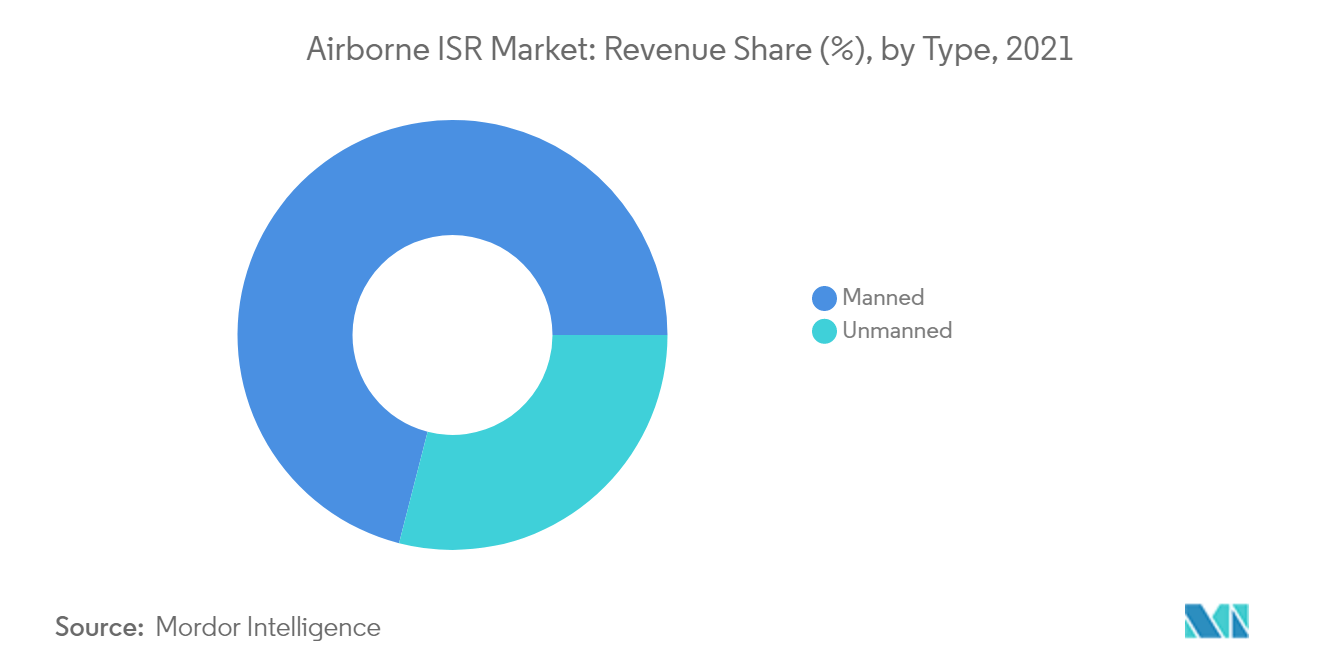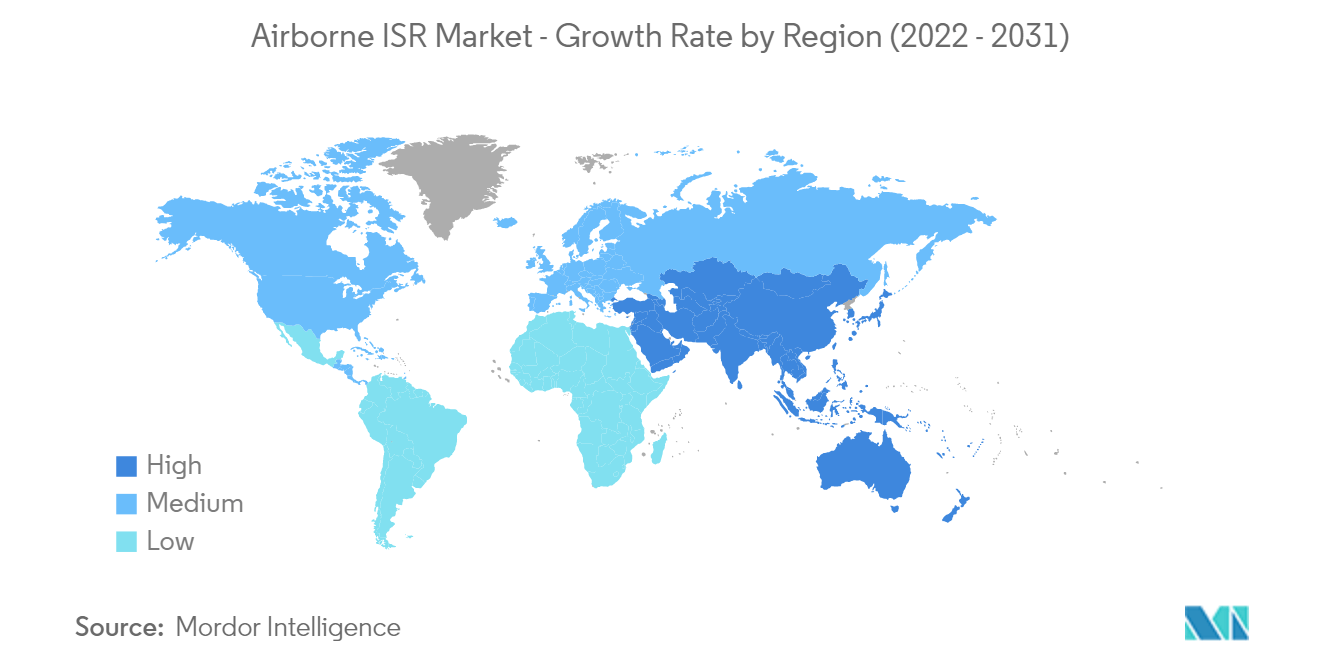Market Trends of Airborne ISR Industry
This section covers the major market trends shaping the Airborne ISR Market according to our research experts:
Unmanned Segment to Experience Highest Growth During the Forecast Period
UAVs have emerged as veritable tools for ISR missions and are, hence, in high demand globally as they provide low-cost alternatives to nations planning to procure aerial assets for ISR and other missions. The emergence of new technologies and platforms has transformed the warfare strategies of nations such as the US, Russia, and China. UAVs are being used extensively in current warfare scenarios due to their visual superiority and capability of performing pre-emptive strikes and surveillance on specific locations. With nations showing a preference for asymmetric warfare, it is expected that UAVs would be deployed in large numbers to collect crucial information that can act as a key decision-making tool. Hence, several nations and defense contractors are significantly increasing R&D investments to enhance their airborne ISR capabilities. For instance, in November 2021, UAE's government-owned EDGE Group launched a series of new additions to its product portfolio of locally developed advanced unmanned aerial vehicles (UAVs), including the QX-5 and QX-6 modern vertical take-off and landing (VTOL) drones that are built for intelligence, surveillance, and reconnaissance (ISR) applications, border security, and other military operations. Thus, the increasing adoption of electronic warfare is expected to drive the demand for superior ISR equipment aboard UAVs, thus, fueling the growth of the unmanned segment of the airborne ISR market.

North America Dominated the Market in 2021
North America held the largest market share by geography in 2021. The US is one of the leading investors involved in the modernization of its defense capabilities. The US government and US DoD are planning to begin divesting a few aerial platforms to provide resources to fund emerging ISR capabilities that can penetrate and collect data in the highly contested environment. The Air Force conducts ISR missions to analyze, inform, and provide joint force commanders with the knowledge needed to achieve advantageous decisions. In April 2021, the US Army's Requirements Oversight Council approved the requirements for its Future Attack Reconnaissance Aircraft in the form of an Abbreviated Capabilities Development Document (A-CDD) that validates the designs developed by the two companies competing to build the aircraft. Lockheed Martin's Sikorsky and Bell are in a head-to-head competition to build prototypes and fly them beginning in November 2022. The Army is also in the process of bringing online a second technology demonstrator called ARES or Airborne Reconnaissance and Electronic Warfare System after awarding a contract to L3Harris Technologies in November 2020. ARES is based on a Bombardier Global Express 6500 jet that will have a different signals intelligence package on it than Artemis. There has been significant interest in multi-mission maritime patrol aircraft in the US in recent years, which has led to the US placing more orders for maritime patrol aircraft in order to increase its maritime surveillance capabilities. Such developments are expected to drive market growth in the region during the forecast period.


